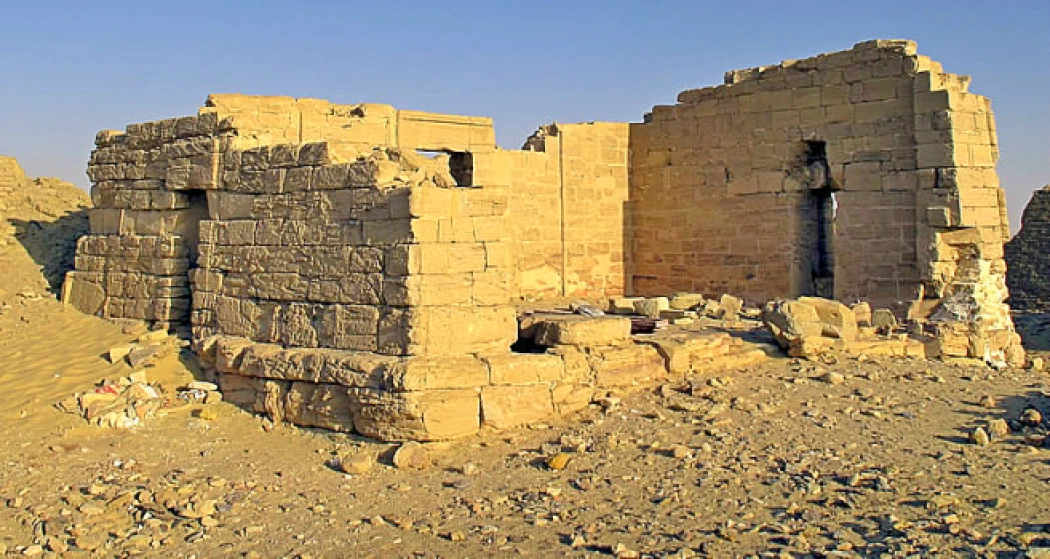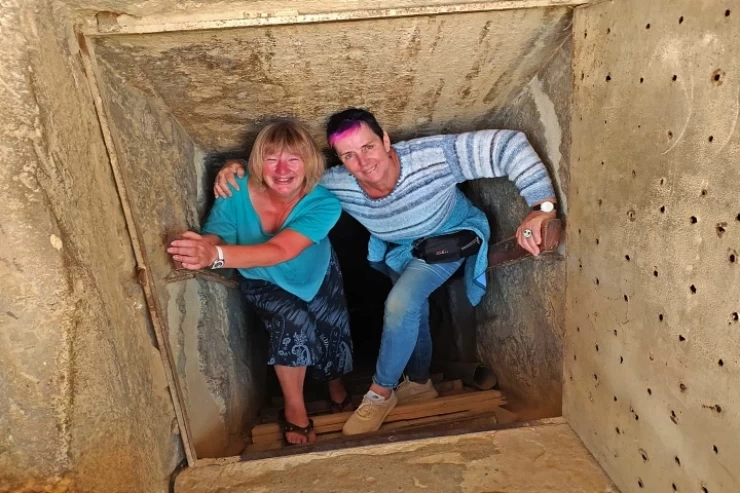
Temple of Nadura - Kharga Oasis
Temple of Nadura - Kharga Oasis
The New Valley Governorate is one of the governorates that witnessed many of the ancient historical eras that the valley oases went through, and this region witnessed development and prosperity in the various eras of Egyptian history, Pharaonic, Greek, Roman, Coptic and Islamic. Therefore, the three oases: Kharga, Dakhla and Farafra include dozens of archaeological sites between temples, tombs, buildings, remains, cities and paths.
In the Kharga Oasis, there is an ancient temple called "Al-Nadura", which is an ancient temple located in the Kharga Oasis in the New Valley Governorate. It used to be the meeting place for all the commercial caravans that came via the Forty-Day Road in the Paris Oasis, starting from Darfur in Sudan to Assiut. It was also used as a fortress and a place for collecting taxes and providing provisions for the commercial caravans that passed by the temple.
The Nadura Temple is located about 2 km north of Kharga city and about 1 km southeast of Hibis Temple. The temple was built on a hill high above the surrounding land. It can be seen from a distance of 5 km due to its height and can be seen from several places within the Kharga Oasis.
The Nadura Temple is considered the oldest observation post in the oases. Whoever climbed this place to survey the surrounding points was called “Nadurji,” which was a job title at that time. This word is still used today and is an Arabic term.
The name of Nadura in the Arab era came from its use as a monitoring point for the caravans passing in ancient times on the Forty-Day Road. This is the important trade route that connected Egypt at Asyut to Darfur in Sudan, passing through the Kharga Oasis. Those climbing the hill can see a large area of the Kharga Oasis.
The Nadora Temple was built in the Roman era as a lookout point and a site to protect the ancient Kharga Oasis from the attacks and raids that thieves carried out from time to time on the people of the oases.
There is also another area in Egypt called Karam Nadora located in Alexandria Governorate, which distinguished the city of Alexandria at the end of the Ottoman era. It is an accumulated earthen mound that was formed over several eras starting from the Ayyubid era. A number of Islamic figures were buried in it, such as Al-Hafiz Al-Salfi, Abu Bakr Al-Tartushi, and Abd Al-Rahman bin Hormuz Al-Tabi’i
Latest Articles
Admin
Aswan Governerate in Egypt
One of Egypt's southern governorates is Aswan Governorate. The city of Aswan serves as its capital. At a latitude of 22 north of the equator (also known as the Tropic of Cancer), it is bounded to the north by the Qena Governorate, to the east by the Red Sea Governorate, to the west by the New Valley Governorate, and to the south by the Republic of Sudan.
Admin
Luxor Governorate Egypt
The capital of the Arab Republic of Egypt is Luxor City, which was once known as "Thebes City" because it served as Egypt's capital during the Pharaonic era. It is situated in the South Upper Egypt region, approximately 670 kilometers from the capital Cairo from the south. It is bordered on the north by Qena Governorate, on the south by Aswan Governorate, on the east by Red Sea Governorate, and on the west by New Valley Governorate.
Admin
History of kafr El Sheikh Governorate
Kafr El Sheikh Governorate is an Egyptian governorate, located in the northernmost part of Egypt in the Nile Delta, with Kafr El Sheikh as its capital. It had a population of 3,172,753 in 2015 and an area of 3,748 km². Its entire area is located north of the delta and overlooks the Mediterranean Sea. The main economic activity of the residents of the governorate is agriculture and fishing, especially the southern lands of the governorate and the lands overlooking the Nile River - Rosetta Branch.
Admin
Egypt's New Administrative Capital
The New Administrative Capital is located between the Cairo-Suez and Cairo-Ain Sokhna roads, 60 km from Cairo and the same distance from Ain Sokhna and Suez. The New Administrative Capital is located on the border of Badr City, in the area between the Cairo-Suez and Cairo-Ain Sokhna roads, just after New Cairo, Mostakbal City and Madinaty.
Admin
Al Gharbia Governorate
Gharbia Governorate is one of the governorates full of archaeological sites, whether they are places or facilities (mosques, churches), as the governorate is a destination for visitors to these places throughout the year, whether they are Egyptians from the different governorates.
Admin
Hamata Islands (Qulaan Archipelago) in Marsa Alam
The Hamata area, south of Marsa Alam in the Red Sea, is one of the most important parts of the Wadi El Gemal Reserve, whether in the desert or the sea. It was named after the sorrel plant, which was distorted to Hamata.














